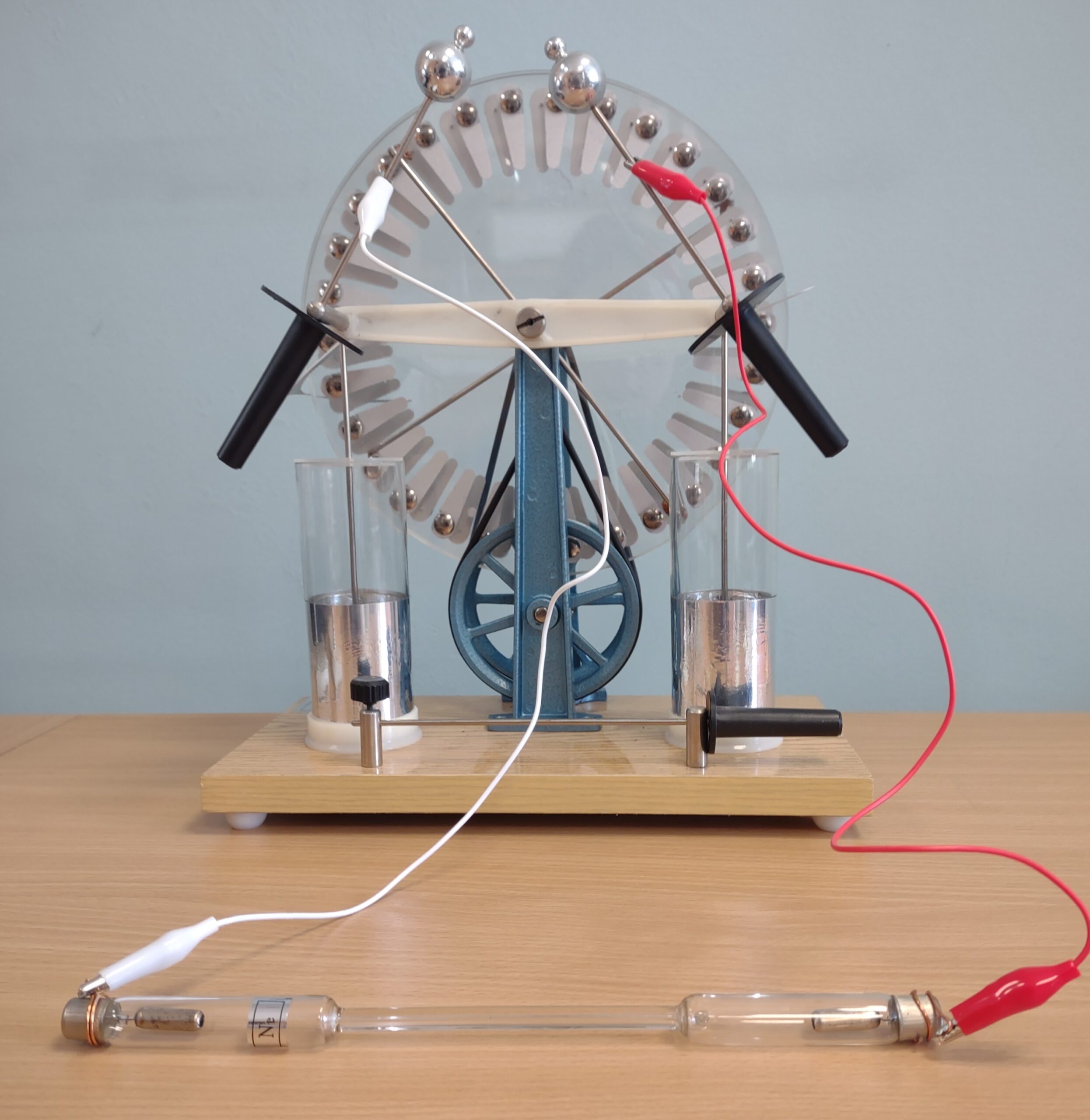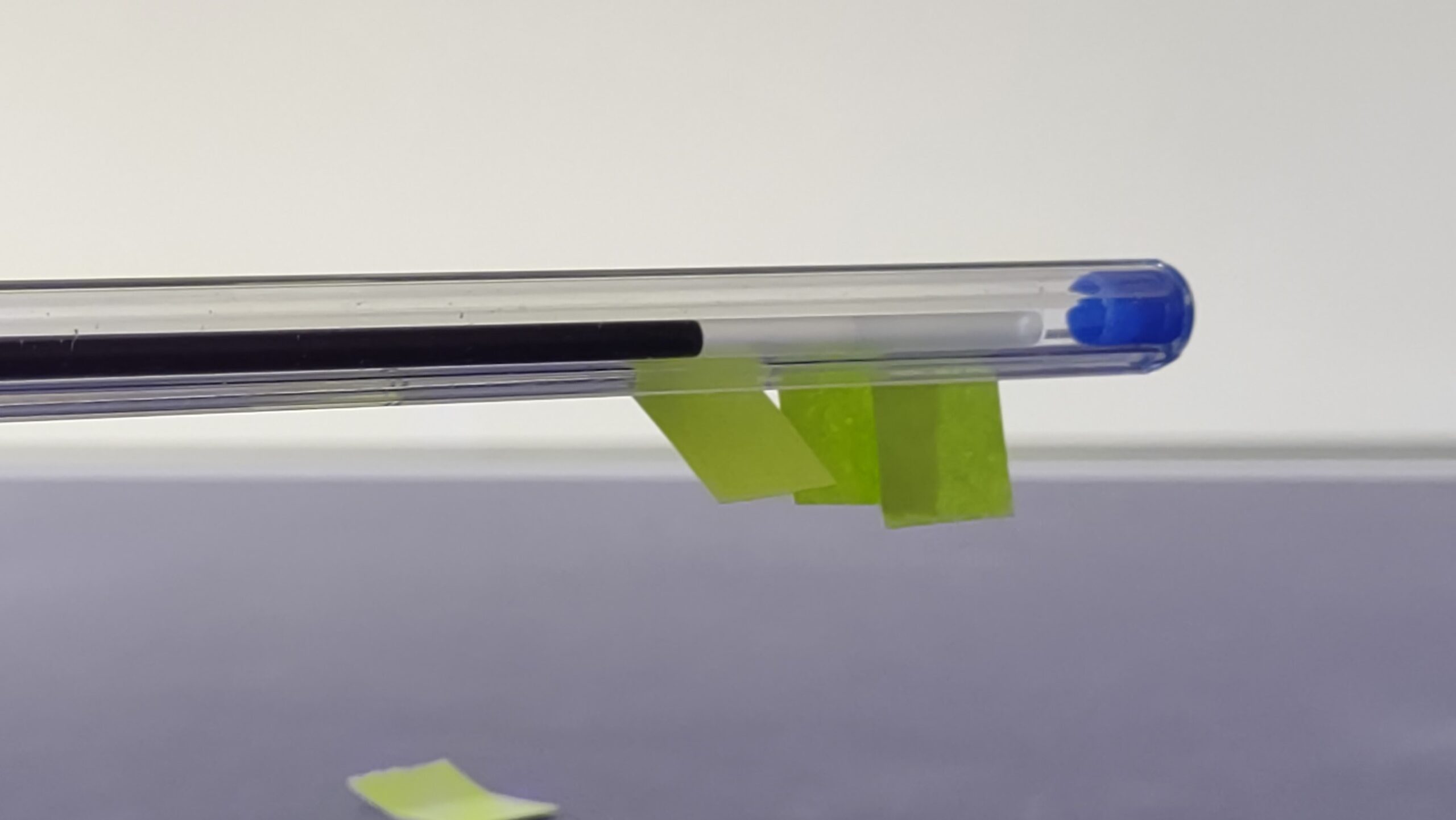Category: Electricity
electricity experiments
Wimshurst machine
When the motor is running one pole carries a large positive charge and the other a large negative charge. The electric fields surrounding the poles ionize the surrounding air, and the air’s electrons are attracted to the positively charged pole, while its positive ions are attracted to the negatively charged pole. Ionized air, therefore, allows…
Read MoreElectric current Theory
An electric current is a stream of electrons or ions moving through an electrical conductor. In a wire the charge carriers are free electrons. An electric field is required in order to produce electric current. The ends of the wire are connected to the poles of an electrical source (battery), so an electric field is created inside…
Read More
Light a neon light with wimshurst machine
Materials: Procedure: Connect each pole of the wimshurst machine with the neon light with the wires. Spin the wheel of the generator and watch the neon light! Explanation: When the motor is running one pole carries a large positive charge and the other a large negative charge. When we connect the neon lamp with the…
Read MoreTheory of Electromagnetism
A wire that carries an electric current creates a magnetic field around it. The electric current, that is, the moving electrons, create the magnetic field. Therefore, a moving charged particle creates both an electric and a magnetic field. That is, there are no magnetic charges, but only electrical ones, which create both the electric and…
Read MoreFlying bag
Materials: plastic bag balloon Procedure: Rub the bag and the balloon on a wool sweater. Place the bag over the balloon and watch it fly! Explanation: Plastic bag and the balloon are negatively charged through rubbing them to the sweater. Like charges repel each other, so the bag appears to fly over the balloon.
Read MoreMove a bubble from distance
Materials: balloon soapy water Procedure: Rub the balloon on a wool sweater and place it next to the bubbles. Watch the bubbles follow the balloon! Explanation: Balloon is charged through rubbing it to the sweater. Bubbles are attracted to the balloon.
Read MoreStatic electricity Theory
The objects that surround us, as well as living organisms, are composed of chemical elements such as carbon, hydrogen, oxygen and nitrogen, etc.Each atom of a chemical element consists of a nucleus around which electrons, which are negatively charged, orbit. The nucleus consists of protons that are positively charged and neutrons that are electrically neutral.…
Read MoreSeparate salt from pepper instantly!
Materials: plastic spoon pepper and salt Procedure: Rub the spoon on a wool sweater and place it next to the salt and pepper. Watch the pepper lifted to the spoon! Explanation: Plastic spoon is charged through rubbing it to the sweater. Pepper is lighter than salt, hence it jumps first to the electrically charged plastic…
Read MoreBend running water from distance!
Materials: comb running water Procedure: Rub a comb to your head and place it next to a stream of water. Watch the stream bend! Explanation: When you rub the comb to your hair, electrons move from hairs to the comb. When you approach the water, the negatively charged comb repels the electrons found in the water.…
Read More
Pick up small scraps of paper without touching them!
Materials: plastic pen small scraps of paper Procedure: Rub a plastic pen on the wool sweater and hold it near small pieces of paper. Watch the small pieces of paper stick attach to the pen. Explanation: When you rub the plastic pen to the wool electrons move from the sweater to the pen. Next positive…
Read More